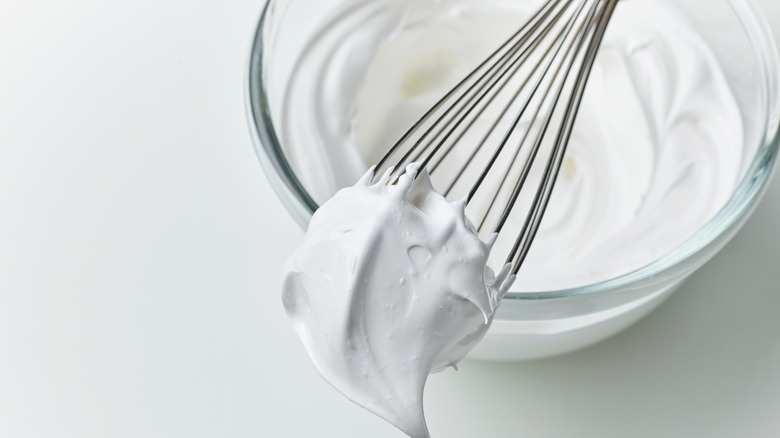Hot Vs. Cold Infusions For Flavoring Whipped Cream, Explained
Just when you thought whipped cream couldn't get any better, along comes infused whipped cream. But what exactly is an infusion, and should we tamper with whipped cream? Culinary Lore explains that infusion is a process of steeping an ingredient in a liquid until the flavor of that ingredient is extracted into the liquid. For example, when you steep your tea bag, you are infusing the water with a particular tea flavor. When it comes to whipped cream, just imagine the flavors you could add to an already decadent item.
Whipped cream may not look like a liquid when it's sitting as a proud dollop on your dessert. However, homemade whipped cream starts as a creamy liquid. When infusing your whipped cream with fun flavors, you'll use the infusion method while the cream is still in a liquid state. There are two infusion methods used for flavoring: hot or cold infusion. Both can work well, depending on what flavor profile you are adding to your whipping cream.
Hot infusion for whipped cream
Hot infusion is used when you want to extract an aroma or flavor, but the ingredient you are using to extract it from isn't something you want in the whipped cream. It may have a texture that won't work well with your dessert, or it could be a spice that isn't made for chewing, but made for flavoring only. For example, you could make cinnamon-infused whipped cream using cinnamon sticks to infuse the flavor, but then remove the sticks after the infusion is done.
When using the hot infusion method, the Chicago Tribune suggests you boil the liquid (in this case, the whipping cream) along with your flavoring, then remove it from the heat and cover — letting the mixture sit still and steep until it reaches room temperature. Once it's complete, strain the liquid to remove any hard particles, then chill your whipping cream until it's nice and cold. According to King Arthur, your whipping cream will whip much easier when it's allowed to thoroughly chill first.
Cold infusion for whipped cream
For cold infusion, of course, there is no heating process. Craft Made Kitchen writes that using the cold infusion process is necessary for flavoring with delicate herbs that won't do well when broken down by heat. This could be lavender or basil leaves, just to name a few. Some herbs and spices can become too strong, or the flavor changes when heated.
Cold infusion is really simple. Add the flavoring you want, such as an herb, spice, or lemon zest, or you can even head to your liquor cabinet and borrow from your collection of bitters to add flavor to your whipped cream. They're perfect for a little orange, cranberry, or cherry flavoring. Simply let the flavorings sit in the cold cream, with a lid on the mixture. This can take hours until you get the aroma or flavor you like. Once it's done, strain the infused cream and refrigerate until it's thoroughly chilled, before whipping it up.


